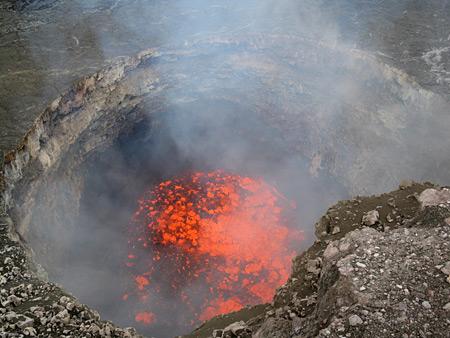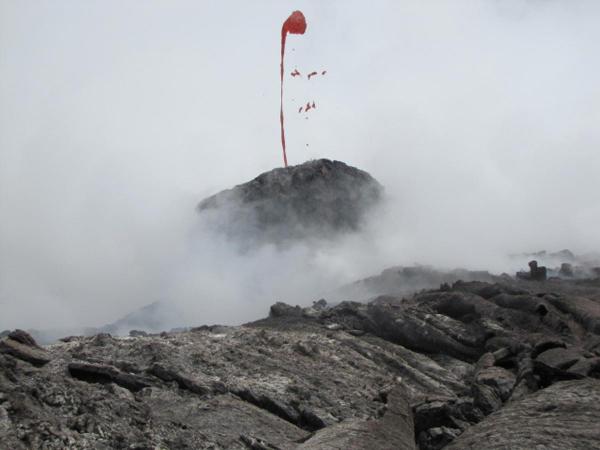Lava Lake on Hawaii's Kilauea Rising Steadily


Scientists are keeping a close eye on a rising lava lake inside a crater on Hawaii's eruptive Mount Kilauea, one of the world's most active volcanoes.
The lava lake in the Halema`uma`u crater, on Kilauea's summit, has been rising steadily in recent weeks and sits about 250 feet (80 meters) below the crater floor. The lava surface has previously been very shallow, about 300 feet (90 meters) below the floor of Halema`uma`u crater, according to the U.S. Geological Survey (USGS).
A number of earthquakes recently ruptured in Kilauea's East Upper Rift Zone. Seventeen of the quakes were strong enough to be located within Kilauea volcano seven were located within the upper east rift zone, three occurred beneath the summit caldera and seven erupted on south flank faults. Scientists at the Hawaiian Volcano Observatory are watching to see if the tremors could trigger new eruptions .
"The ongoing seismicity within the upper east rift zone seemed to peak around the magnitude-3.8 quake Thursday morning [Feb. 10] but we will continue to watch this area closely," said a statement from the Hawaiian Volcano Observatory.
Explosions in the Halema`uma`u crater can shoot rocks and lava several hundred meters from the vent.
{youtube ixTYHe9zMFU}
The above movie shows the lava lake in Halema`uma`u crater taken as USGS scientists flew over. When the video was taken, the lava was at a high stand during part of a rise and fall cycle, when very little gas is emitted and views are clear. About seven minutes after the video was taken, violent spattering and gas release occurred from the lake margin, triggering a drop of the lava level.
Get the world’s most fascinating discoveries delivered straight to your inbox.
The substantial overhang along the north rim of the vent cavity is shown clearly in the video. Additionally, the remains of the partially destroyed Halema`uma`u Overlook on the rim of Halema`uma`u crater, directly above the vent cavity can be seen several times during the clip. For scale, the vent cavity is about 500 feet (150 meters) wide.
The lava lake is in nearly constant motion. It makes a continuous "crashing wave" noise as the churning lava gases are released from the lake surface. Scientists made a recording of sounds from the lava lake on Feb 14. Have a listen here (mp3).
Sharp popping noises occur when rocks falling from the vent wall hit the lava lake surface. A very faint broken glass sound was also produced by a small rock slide on the vent wall.
The Hawaiian Volcano Observatory has webcams pointed at the crater. Take a look here and here.
- The World's Five Most Active Volcanoes
- Aftermath of Hawaiian Lava Flow Caught on YouTube
- Image Gallery: Volcanoes from Space
Reach OurAmazingPlanet staff writer Brett Israel at bisrael@techmedianetwork.com. Follow him on Twitter @btisrael.





